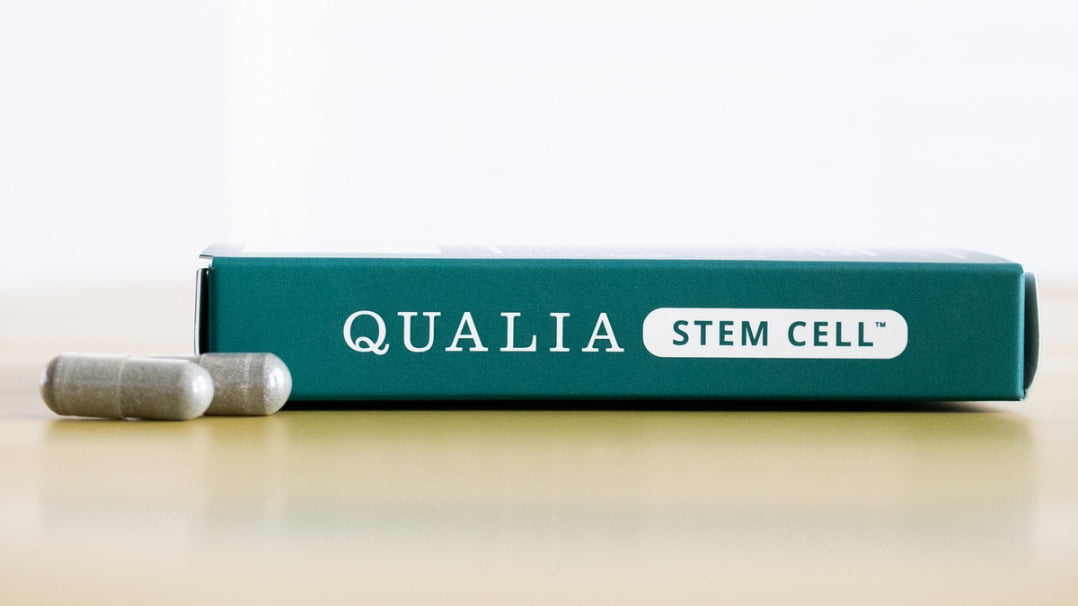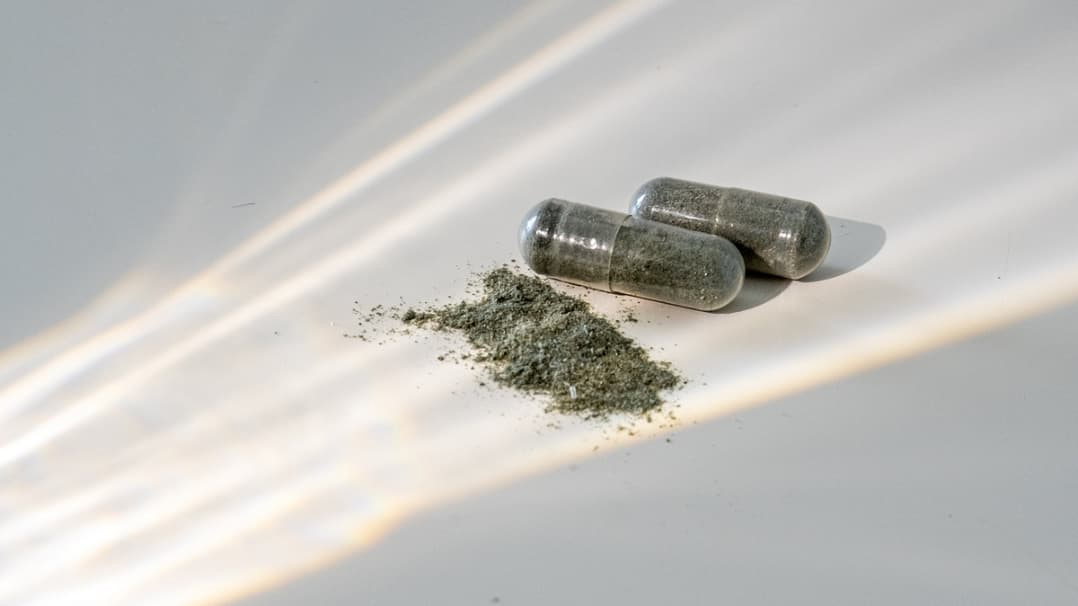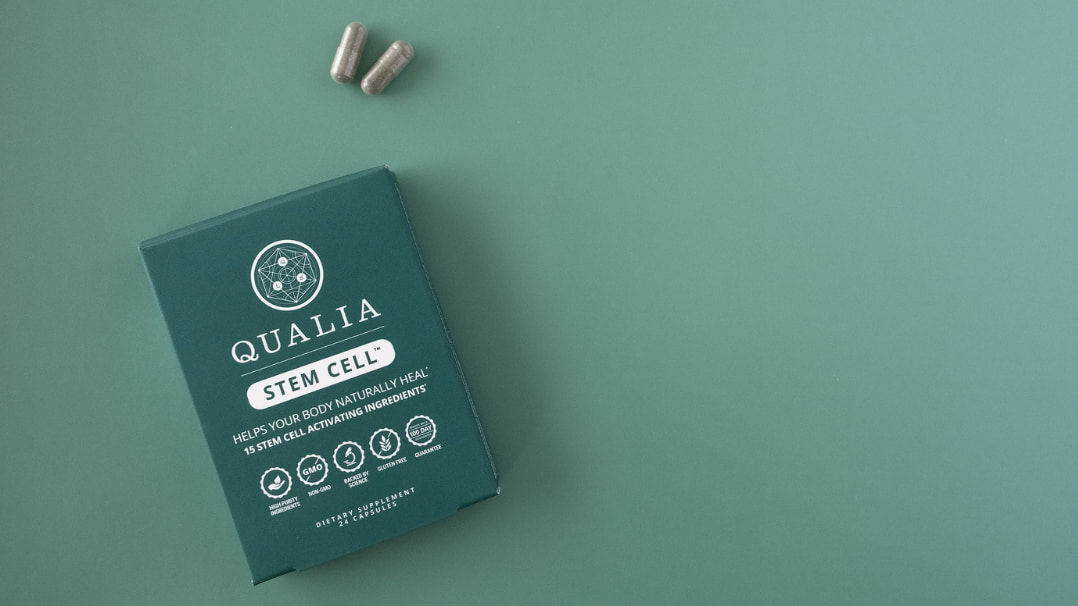Pyrroloquinoline Quinone (PQQ)

Pyrroloquinoline quinone (PQQ) is thought of as a non-vitamin growth factor, influencing metabolism and the expression of some genes. Although it’s not believed to be a helper molecule (i.e., vitamin cofactor) in any biochemical reactions, It does appear to be essential for healthy growth and function. PQQ is often categorized as a mitochondrial nutrient, supporting mitochondrial efficiency, so they are more capable of converting dietary fats and sugars into cellular energy. PQQ also plays roles in promoting healthy gut microbiome, immune system function, antioxidant defenses, and cognitive function. In the brain, it appears to be especially important in supporting healthy memory and cognition with aging. Some of the best food sources include soy, spinach, parsley, and kiwifruit.*
Top Benefits of PQQ
Supports mitochondrial efficiency*
Supports antioxidant defenses*
Supports healthy brain function*
Supports healthy gut microbiota*
Qualia’s PQQ Sourcing
PQQ sourcing is focused on ensuring it is non-GMO, gluten-free and vegan.
PQQ Formulating Principles and Rationale
PQQ is dose-dependent (see Qualia Dosing Principles) in the range it’s commonly used (up to 20 mg a day). Since we use PQQ in more than one product, and assume some people might take both, our goal was to make sure people taking both products would not be getting too much PQQ. PQQ is additive with other mitochondrial and antioxidant nutrients. This means lower amounts of PQQ can be needed to support healthy function when it is combined with other nutrients, compared to when it is given as an isolated nutrient.*
PQQ Key Mechanisms
Supports mitochondrial structure and function*
Supports transcription factors of mitochondrial biogenesis (PGC-1α, NRF1, NRF2, TFAM)* [1–3]
Supports mitochondrial size/density/number* [1,3]
Supports mitochondrial DNA (mtDNA) amount* [1–3]
Supports citric acid cycle function* [1,2,4]
Supports mitochondrial electron transport chain performance* [1,2]
Supports the NAD+ pool* [3]
Supports mitochondrial membrane potential* [5]
Supports cellular metabolism*
PQQ supports the enzymatic activity of lactate dehydrogenase (LDH) to convert lactate to pyruvate via the oxidation of NADH to NAD+* [6]
By supporting pyruvate levels, PQQ supports ATP production via the mitochondrial citric acid cycle and oxidative phosphorylation* [6]
Supports signaling pathways*
Supports AMPK signaling* [3]
Supports liver kinase B1 (LKB1)* [3]
Supports SIRT1* [3]
Supports antioxidant defenses*
PQQ is reduced to PQQH2 by reaction with reducing agents such as NADPH or glutathione; PQQH2 has antioxidant properties* [7]
Counters oxidative stress and the generation of reactive oxygen species (ROS)* [4,5,8,9]
Supports brain function*
Supports neuroprotective functions* [8–11]
Supports nerve growth factor (NGF) production* [12]
Supports cerebral blood flow* [13]
Supports attention and working memory* [13]
Supports sleep and resistance to fatigue and stress* [14]
Supports auditory health* [15]
Supports a healthy gut microbiota*
Supports a healthy gut microbiota composition* [16]
Supports gut barrier function* [17]
Counters gut oxidative stress* [17]
Supports healthy gut cytokine signaling* [16,17]
*These statements have not been evaluated by the Food and Drug Administration. This product is not intended to diagnose, treat, cure, or prevent any disease.
REFERENCES
[1]W. Chowanadisai, K.A. Bauerly, E. Tchaparian, A. Wong, G.A. Cortopassi, R.B. Rucker, J. Biol. Chem. 285 (2010) 142–152.
[2]E. Tchaparian, L. Marshal, G. Cutler, K. Bauerly, W. Chowanadisai, M. Satre, C. Harris, R.B. Rucker, Biochem. J 429 (2010) 515–526.
[3]K. Saihara, R. Kamikubo, K. Ikemoto, K. Uchida, M. Akagawa, Biochemistry 56 (2017) 6615–6625.
[4]C.B. Harris, W. Chowanadisai, D.O. Mishchuk, M.A. Satre, C.M. Slupsky, R.B. Rucker, J. Nutr. Biochem. 24 (2013) 2076–2084.
[5]R. Tao, J.S. Karliner, U. Simonis, J. Zheng, J. Zhang, N. Honbo, C.C. Alano, Biochem. Biophys. Res. Commun. 363 (2007) 257–262.
[6]M. Akagawa, K. Minematsu, T. Shibata, T. Kondo, T. Ishii, K. Uchida, Sci. Rep. 6 (2016) 26723.
[7]M. Akagawa, M. Nakano, K. Ikemoto, Biosci. Biotechnol. Biochem. 80 (2016) 13–22.
[8]Q. Zhang, M. Shen, M. Ding, D. Shen, F. Ding, Toxicol. Appl. Pharmacol. 252 (2011) 62–72.
[9]J.-J. Zhang, R.-F. Zhang, X.-K. Meng, Neurosci. Lett. 464 (2009) 165–169.
[10]E. Aizenman, K.A. Hartnett, C. Zhong, P.M. Gallop, P.A. Rosenberg, J. Neurosci. 12 (1992) 2362–2369.
[11]J. Kim, R. Harada, M. Kobayashi, N. Kobayashi, K. Sode, Mol. Neurodegener. 5 (2010) 20.
[12]K. Yamaguchi, A. Sasano, T. Urakami, T. Tsuji, K. Kondo, Biosci. Biotechnol. Biochem. 57 (1993) 1231–1233.
[13]Y. Itoh, K. Hine, H. Miura, T. Uetake, M. Nakano, N. Takemura, K. Sakatani, Adv. Exp. Med. Biol. 876 (2016) 319–325.
[14]M. Nakano, T. Yamamoto, H. Okamura, A. Tsuda, Y. Kowatari, Functional Foods in Health and Disease 2 (2012) 307–324.
[15]Y. Gao, T. Kamogashira, C. Fujimoto, S. Iwasaki, T. Yamasoba, Sci. Rep. 12 (2022) 15911.
[16]J.E. Friedman, E. Dobrinskikh, A. Alfonso-Garcia, A. Fast, R.C. Janssen, T.K. Soderborg, A.L. Anderson, J.A. Reisz, A. D’Alessandro, D.N. Frank, C.E. Robertson, B.A. de la Houssaye, L.K. Johnson, D.J. Orlicky, X.X. Wang, M. Levi, E.O. Potma, K.C. El Kasmi, K.R. Jonscher, Hepatol Commun 2 (2018) 313–328.
[17]X. Yin, D. Ming, L. Bai, F. Wu, H. Liu, Y. Chen, L. Sun, Y. Wan, P.A. Thacker, G. Wu, F. Wang, J. Anim. Sci. (2018).







